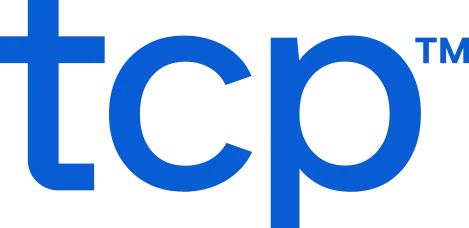What would you do if you found out a patrol shift went uncovered because of a missed note or spreadsheet error? You’d probably start looking for a better system, and if you’re reading this, you might already be at that point.
Just one missed shift can ripple across an entire department. Officers get called in on short notice, overtime costs climb, and nobody’s better off for it. What should be routine coordination feels like constant crisis management.
If you’re managing a police department, you face a gauntlet of scheduling issues — 24/7 operations, complex rotations, compliance with labor rules, union agreements, and fatigue policies. And, you have to do all of this while ensuring every neighborhood stays protected.
So, who has your department’s back while they have your community’s? Dedicated police scheduling software.
These solutions automate the most challenging aspects of managing shifts, tracking certifications, and coordinating callouts. Instead of managing spreadsheets and playing catch up, command staff can focus on readiness and safety.
This guide breaks down the top seven police scheduling software tools of 2025, highlighting what makes each one stand out and how to choose the right fit for your agency.
The shortlist of police scheduling software
In the public safety sector, police departments differ from fire and EMS services. You’ve got unpredictable calls, high liability, and overlapping duty types, such as court appearances, training, and patrol coverage in addition to rotating shifts.
This complexity demands solutions that can handle changing priorities while maintaining compliance. Here’s our shortlist of 2025’s best options for law enforcement teams:
- Aladtec (by TCP)
- inTime
- Snap Schedule
- eSchedule
- Vector (Vector Solutions)
- PowerTime (PowerDMS)
- Pace Scheduler
Each solution is compared below for ease of use, features, and what makes it stand out in real-world law enforcement operations.
1. Aladtec (by TCP Software)
Trusted, flexible scheduling for police, fire, and EMS.
| Category | Details |
| Ease of Use | Clean, mobile-friendly interface that works well for both supervisors and officers |
| Features | Shift scheduling, overtime requests, certification tracking, communication tools, and time-off management |
| Standout Features | Built-in alerts for fatigue and coverage gaps, custom rules by department, and powerful reporting |
| Reasons to Buy | • Designed specifically for public safety professionals • Streamlines communication and reduces scheduling errors • Scalable for single departments or multi-agency operations |
| Reasons to Avoid | • Requires initial configuration to fit department policies • Broader automation features are best used when paired with its communication tools |
Why Aladtec stands out
Aladtec combines scheduling, communication, and compliance into a single, easy-to-use system trusted by thousands of public safety agencies.
Supervisors can publish or adjust shifts from any device, while officers can view schedules, trade shifts, or request time off instantly. Its fatigue safeguards and rule-based scheduling help departments maintain readiness without overworking staff.
Unlike many generic workforce platforms, Aladtec was built from the ground up for public safety scheduling. It fits the daily rhythm of policing — unpredictable shifts, multiple units, and constant change — and makes the complex parts of scheduling seamless.
Note: Aladtec is part of TCP Software’s suite of public safety scheduling solutions.
2. inTime
Enterprise-level scheduling for complex law enforcement agencies.
| Category | Details |
| Ease of Use | Admin experience is robust once configured; best with a dedicated owner |
| Features | Court scheduling, overtime management, fatigue tracking, shift bidding, analytics |
| Standout Features | Built-in labor law compliance tools, union rule enforcement, integration with training, and payroll |
| Reasons to Buy | • Comprehensive, public-safety-specific scheduling suite • Deep compliance reporting and audit readiness • Handles training, time off, and overtime in one system |
| Reasons to Avoid | • Longer setup process for smaller agencies • May feel complex without dedicated admin support |
Why inTime stands out
InTime excels when you need precision — rest rules, certifications, and minimum staffing are enforced automatically. It’s a fit for metropolitan or county agencies with layered roles and frequent court/training conflicts .
Some agencies with multiple divisions or overlapping roles have reported a cluttered interface, longer usability curve that requires excess training, and lack of transparent documentation on how to use the solution.
3. Snap Schedule
Visual scheduling built for flexibility.
| Category | Details |
| Ease of Use | Modern interface with drag-and-drop functionality |
| Features | Rotating shift planning, overtime tracking, leave management, reporting, and mobile access |
| Standout Features | Automated open‑shift bidding with union/contract rule support; visibility into callouts and gaps |
| Reasons to Buy | • Quick learning curve for schedulers and supervisors • Strong customization for different shift types • Affordable for mid-sized departments |
| Reasons to Avoid | • Lacks deeper public safety compliance integrations Complex CBA scenarios may need extra configuration • May require customization for complex rotation rules |
Why Snap Schedule stands out
Snap Schedule’s visual interface makes shift management easier, especially for agencies juggling multiple divisions or rotating patrols. It’s ideal for mid-sized departments that want flexibility without sacrificing clarity.
Supervisors can easily identify coverage gaps, adjust assignments, or modify rotations on the fly. While it’s not a dedicated solution built for public safety alone, its customization options make it an option to consider for agencies modernizing manual tools.
4. eSchedule
Lightweight, intuitive software for smaller agencies.
| Category | Details |
| Ease of Use | Simple to learn with minimal onboarding needed |
| Features | Shift swaps, time-off requests, certification logs, payroll exports |
| Standout Features | Clean design, easy shift approval workflows, mobile-friendly layout |
| Reasons to Buy | • Fast implementation and short learning curve • Reliable for smaller departments or rural agencies • Great balance between functionality and simplicity |
| Reasons to Avoid | • Limited rule automation for larger organizations • Fewer integrations than higher-end systems |
Why eSchedule stands out
eSchedule provides a straightforward solution for small departments to transition away from paper schedules and spreadsheets. Its web-based platform handles basic scheduling, time-off management, and shift swaps smoothly.
While it doesn’t include advanced compliance or fatigue prevention tools, its simplicity and affordability make it a good first step for smaller teams to adopt automated scheduling.
5. Vector (Vector Solutions)
Advanced analytics and compliance management for large departments.
| Category | Details |
| Ease of Use | Streamlined once configured; more setup time for advanced features |
| Features | Shift scheduling with minimum staffing, callbacks/OT equalization, compliance alerts, performance analytics, and certification management |
| Standout Features | Advanced analytics dashboards and training integration |
| Reasons to Buy | • Great for departments that rely heavily on data-driven decisions • Strong compliance and risk mitigation capabilities • Good fit when you’re already using Vector tools |
| Reasons to Avoid | • Higher learning curve for staff • Overkill for small or mid-sized departments |
Why Vector stands out
Vector appeals to agencies standardizing operations on a common platform — scheduling plus training/policy management in one vendor family. It’s an excellent fit for large or metropolitan agencies that want real-time insights into workload balance and staffing trends.
The trade-off is complexity and ease of use. But for departments ready to invest in analytics, Vector can elevate workforce planning and accountability.
6. PowerTime (PowerDMS)
Scheduling that connects with training and policy management.
| Category | Details |
| Ease of Use | Straightforward if you’re already using PowerDMS; moderate learning curve otherwise |
| Features | Schedule publishing, credential verification, time tracking, and policy compliance integration |
| Standout Features | Seamless link between scheduling, training records, and compliance audits |
| Reasons to Buy | • Great fit for departments already using PowerDMS • Reduces manual data entry across training and scheduling • Ideal for accreditation and compliance-focused operations |
| Reasons to Avoid | • Limited standalone capabilities • Not as customizable as dedicated scheduling tools |
Why PowerTime stands out
PowerTime connects scheduling directly with your training and policy ecosystem. If your department already manages training certifications through PowerDMS, the integration makes it easy to ensure every officer on duty is current and qualified.
It’s a smart option for agencies focused on compliance and accreditation, but may feel limited if used outside the broader PowerDMS suite.
7. Pace Scheduler
Budget-friendly and reliable scheduling for smaller departments.
| Category | Details |
| Ease of Use | Simple dashboard and fast setup; ideal for teams with limited IT resources |
| Features | Shift scheduling, overtime alerts, payroll exports, and email notifications |
| Standout Features | Straightforward implementation, flexible scheduling patterns, and clear reporting |
| Reasons to Buy | • Affordable and easy to maintain • Strong customer support • Good mix of scheduling and payroll management features for small teams |
| Reasons to Avoid | • Not ideal for large agencies with complex rules • Limited automation and fatigue management tools. |
Why Pace Scheduler stands out
Pace Scheduler gives smaller departments everything they need to stay organized without unnecessary extras. It’s easy to learn, quick to deploy, and reliable for managing day-to-day coverage.
While it won’t be able to match a scheduling solution for large agencies, it’s a solid, budget-conscious option for police teams looking to simplify scheduling and payroll coordination.
How to pick the right employee scheduling software for your department
You’ll find dozens of law enforcement scheduling systems claiming to simplify your workload. The real test is how they fit your department’s size, rules, and culture.
Start with the problems you most need to solve like unplanned OT, rotation imbalances, court/training conflicts, or fatigue exposure. Then pressure‑test vendors on how they handle:
- Rule-based scheduling: Enforce labor laws, union agreements, and department policies automatically.
- Certification tracking: Assign only qualified officers to specific roles or units.
- Court and training integration: Merge mandatory obligations with regular shifts for complete visibility.
- Fatigue prevention: Block scheduling that violates rest or overtime pay rules.
- Real-time notifications: Keep staff updated across desktop and mobile devices.
- Audit-ready reporting: Create defensible records for compliance and incident reviews.
When evaluating software, it’s worth seeing how each one performs under pressure — not just during calm, predictable weeks. Ask vendors how their tools handle simultaneous callouts, overlapping shifts, or crisis response.
Smarter scheduling builds safer teams
Police work runs on coordination. When schedules fall apart, so does readiness.
By moving away from manual scheduling, your department reduces overtime waste, prevents fatigue, and builds fairer, more transparent staffing systems. When officers can trust their schedules and supervisors have visibility into coverage, your department runs smoother and safer.
That’s exactly what TCP’s Aladtec was built to do. It’s designed specifically for public safety agencies, giving you rule-based scheduling, fatigue management, and shift communication tools that adapt to your department’s unique policies and staffing demands.
With Aladtec, your team can focus less on spreadsheets and more on serving your community.
TCP Software’s employee scheduling and time and attendance solutions have the flexibility and scalability to suit your business and your employees, now and as you grow.
From TimeClock Plus, which automates even the most complex payroll calculations and leave management requests, to Humanity Schedule for dynamic employee scheduling that saves you time and money, we have everything you need to meet your organization’s needs, no matter how unique. Plus, with Aladtec, we offer 24/7 public safety scheduling solutions for your hometown heroes.
Ready to learn how TCP Software takes the pain out of employee scheduling and time tracking? Speak with an expert today.



